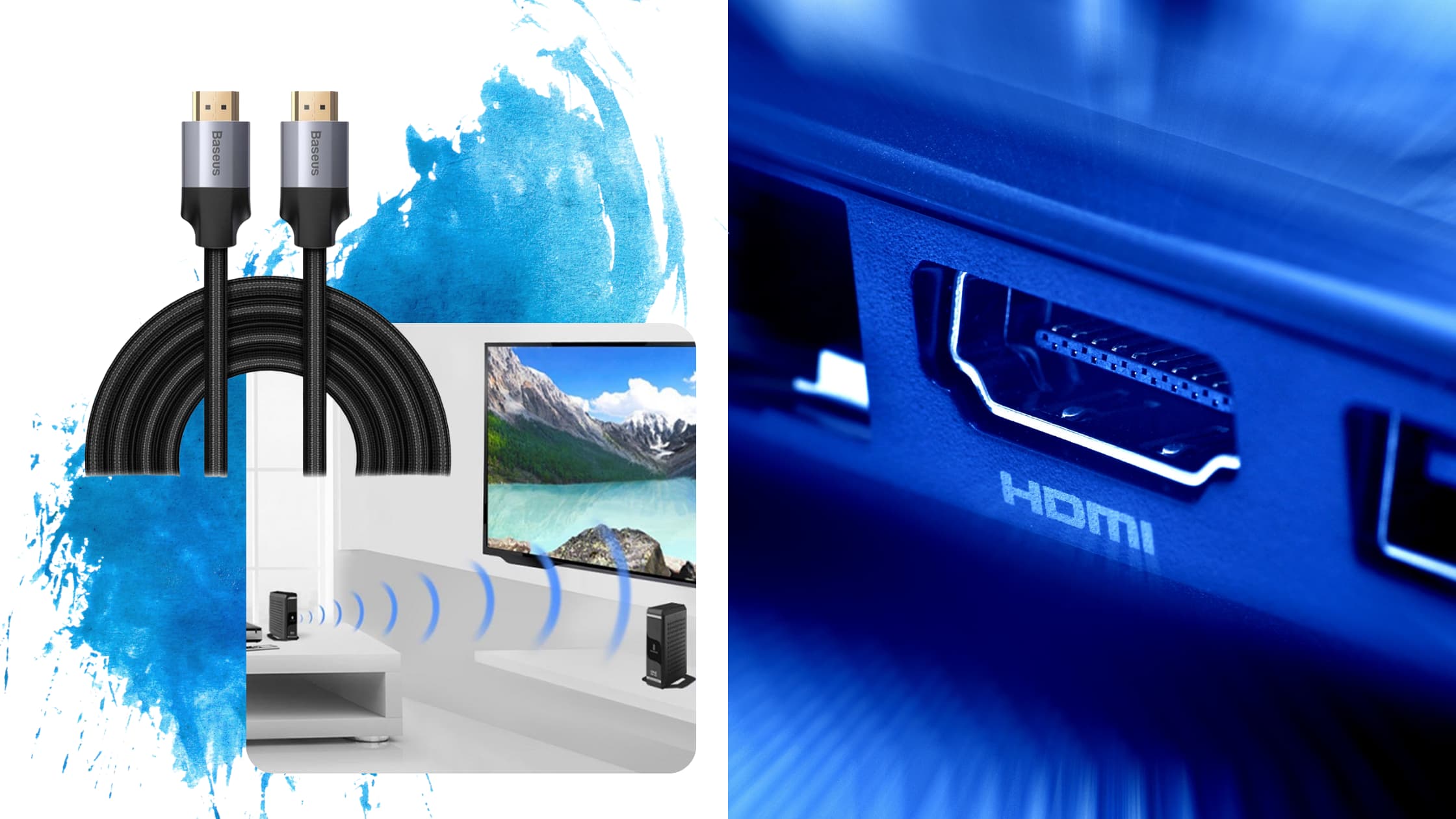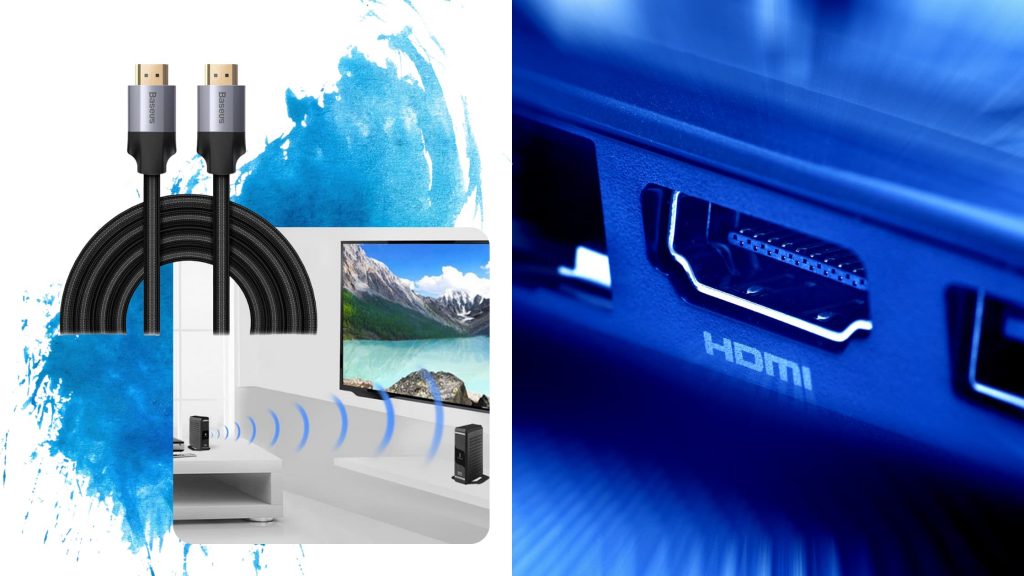
The HDMI cable has come to replace many of the cables you would have seen with your older television sets. High-Definition Multimedia Interface (HDMI) allows you to connect two HDMI compliant devices to transmit information such as video and audio between them. They are the standard choice amongst high-definition TVs (HDTV).
This type of connector was developed in 2002, with the intention of a backwards-compatible audio-video (AV) connector for Digital Visual Interface (DVI). Hitachi, Panasonic, Philips, Silicon Image, Sony, Thomson, RCA, and Toshiba began the development of this technology and are known as its founders.
The founders created the HDMI Forum on the 25th October 2011, which now serves as the centre for the development of the HDMI specification. More and more gadgets can be seen adopting this transmission. There are different types of HDMI connectors. However, they all are now used as a replacement for analogue video standards.
The DVI does not require any licence for interfacing HDMI. Companies need to apply for HDMI licensing through the HDMI LLC to be able to incorporate the technology in their products. This is because the HDMI specification is not an open standard.
Companies pay a fee to become HDMI adopters, which then allows them access to many rights but most importantly they get access to the compliance test specification (CTS). The CTS is vital for compliance and certification for any HDMI compliant products to be sold legally.
In this blog post, you will learn all about HDMI cables and their functionality. Armed with this information, you can get the best experiences from your digital gadgets!
What is an HDMI Interface?
The HDMI allows you to send high-resolution digital video, with theatre-quality sound and device commands. Unlike older AV cables, such as composite cables that separate the audio and video signals into individual lines, HDMI uses a single cable to pass the signal through the connector.
What is an HDMI Connector?
HDMI connectors are the ends and the ports via which the cable connects two separate devices. They are of type male and female. Usually, the male connectors are at the ends of the cable while female connectors can be found recessed into the devices as the ports.
However, the reverse can also be seen in some applications with protected male ends in devices. The positioning of the connectors is done to prevent short circuits by accidental shorting through an external metallic object.
How Many Different HDMI Connectors are There?
Even though there are five HDMI connector types; the Standard connector, Mini connector, and Micro connector sizes are the most common ones. The following table summarises the different connector types.
| Connector Type | Specification | Features |
| Standard(Type A) | HDMI 1.0 | • The male connector (plug) outside dimensions: 13.9 mm × 4.45 mm. • Female connector (receptacle) inside dimensions: 14 mm × 4.55 mm. • Comes with a 19-pin configuration. • Supports all SDTV, EDTV, HDTV, UHD, and 4K modes. • Electrical compatibility with single-link DVI-D. |
| Dual Link(Type B) | HDMI 1.0 | • As of August 2021, it has not been used in any products. • Dual Link HDMI connector dimensions: 21.2 mm × 4.45 mm. • Comes with a 29-pin configuration, carrying six differential pairs instead of three. • Supports very high-resolution displays such as WQUXGA (3840×2400). • Electrical compatibility with dual-link DVI-D. |
| Mini(Type C) | HDMI 1.3 | • Mini HDMI connector dimensions: 10.42 mm × 2.42 mm. • Comes with a 19-pin configuration. • Supports portable devices like DSLR cameras, camcorders, larger tablets, and satellite navigation systems. • All positive signals of the differential pairs are swapped with their corresponding shield • DDC/CEC Ground assigned to pin 13 instead of pin 17. • CEC assigned to pin 14 instead of pin 13. • The Reserved pin is 17 instead of pin 14. |
| Micro(Type D) | HDMI 1.4 | • Micro HDMI connector dimensions: 5.83 mm × 2.20 mm. • Supports small and portable devices like mobile phones. • Comes with a 19-pin configuration with different pin assignment than types A and C. |
| Automotive Connection System(Type E) | HDMI 1.4 | • Comes with a 19-pin configuration specifically designed for automotive systems. • The locking tab keeps the cable from vibrating loose. • The shell helps prevent moisture and dirt from interfering with the signals. • Standard consumer cables can be connected via a relay connector. |
How Many Types of HDMI Cables are There?
Broadly, HDMI cables can be classified into Standard, High-Speed, and Ultra-High-Speed HDMI cables. The former two are further sub-categorised based on Ethernet and Automotive applications.
| Cable Type | Resolution | Bandwidth | Features |
| Standard(Category 1) | 1080i or 720p | 4.95Gb/s | • Designed for common HDTV broadcast, cable, satellite TV, and some older applications. • Has lower bandwidth capacity. • Optimised for HDMI versions 1.0 to 1.2a. • If a cable has no mention of its type, then it is most likely a standard HDMI cable. |
| Standard with Ethernet | 1080i or 720p, and a dedicated HDMI Ethernet Channel | 4.95Gb/s | • Same capabilities as standard. • Comes with a dedicated Ethernet channel. • Both HDMI connected devices must have Ethernet Channel enabled. |
| Standard Automotive | 1080i or 720p | 4.95Gb/s | • Same capabilities as standard cables. • Designed to connect portable or in-car DVD players and other devices to in-car video displays. • Comes with a protective casing to suppress interference from other car electrical systems and wiring. |
| High-Speed(Category 2) | 1080p4K @ 30Hz | 10.2Gb/s | • Designed to handle higher video resolutions and provide support for 3D and Deep Colour. • Has a higher bandwidth capacity than standard cables. • Optimised for HDMI versions 1.3 to 1.4a |
| High-Speed with Ethernet | 1080p or 4K @ 30Hz, and a dedicated HDMI Ethernet Channel | 10.2Gb/s | • Same capabilities as high-speed cables. • Comes with a dedicated Ethernet channel. • Preferred for device networking applications. • Both HDMI connected devices must have Ethernet Channel enabled. |
| High-Speed Automotive | 1080p4K @ 30Hz | 10.2Gb/s | • Same capabilities as high-speed cables. • Designed to connect portable or in-car DVD players and other devices to in-car video displays. • Comes with a protective casing to suppress interference from other car electrical systems and wiring. |
| Premium High Speed(Category 3) | 4K @ 60Hz | 18Gb/s | • Used for reliable transfer of 4K/UltraHD resolution video, including 4K/60 Hz, HDR, and expanded colour range. • Optimised for HDMI versions 2.0/a/b. • Certified by the Premium HDMI Cable Certification Program. |
| Ultra-High-Speed(Category 3) | 8K @ 60Hz4K @ 120Hz | 48Gb/s | • Supports all capabilities of previous cables with added support for 8K with HDR and 10k resolution. • Optimised for HDMI version 2.1 and is fully backwards compatible. • Less susceptible to EMI (electromagnetic interference) caused by some wireless devices. |
What to Know About HDMI Cables
For modern devices, such as your ULTRA HD televisions, HDMI is the primary cable for data transmission. These cables can also come with added features that improve the overall quality of the transfer. These cables can be bidirectional or directional.
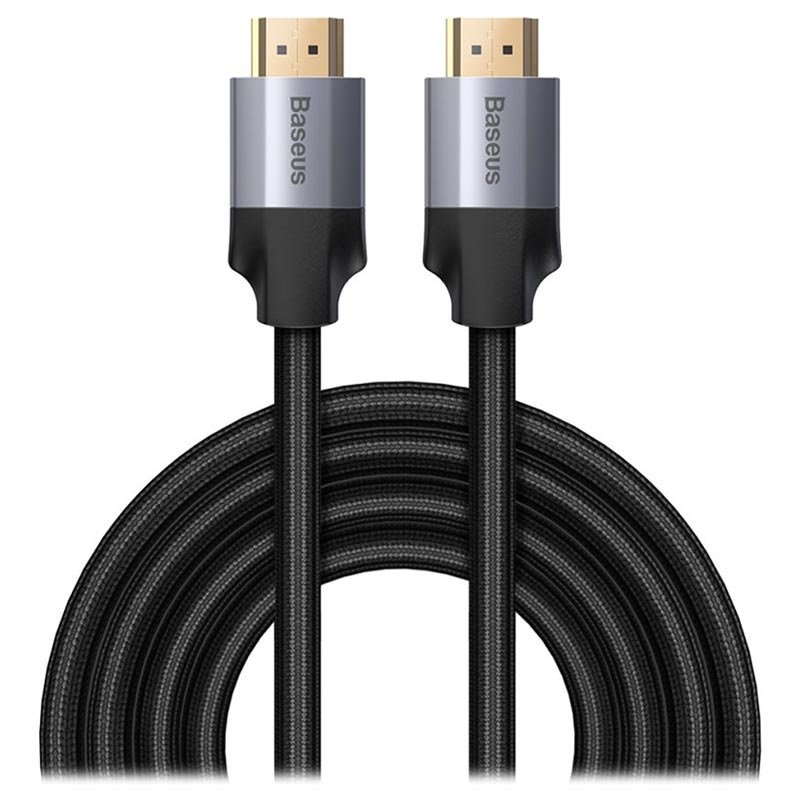
Bidirectional Cable
Passive HDMI Cable: The majority of the HDMI cables in use are passive cables that allow the transfer of information in both directions. Thus, you can connect either end to an HDMI input or output connection. You can expect stable connections for up to 15 feet/4.5 metres with these cables.
Directional Cables
Active (Amplified) HDMI Cable: Increased lengths of HDMI cable require additional boost for reliable transfer of signal. This can be achieved using an active HDMI cable that comes with amplification circuitry built into one connection head.
While these cables work with internal power, some may come with USB power or AC adapter power source connection cables.
Optical HDMI Cable: These HDMI cables use optic fibre cables to transfer video and audio signals. These are very thin and are cables of reliably transferring signals over longer distances without any external power.
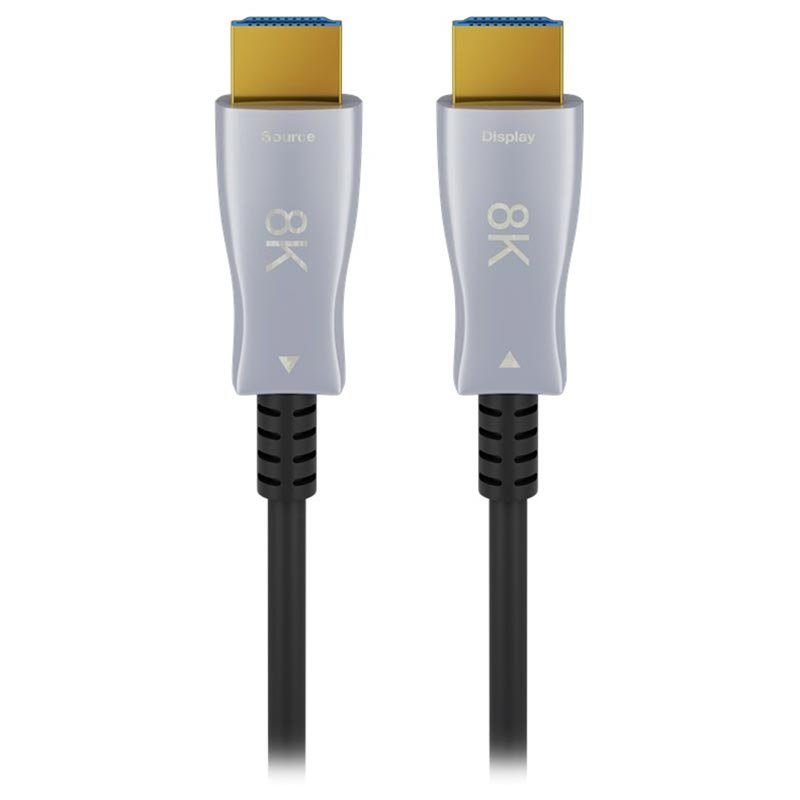
What are the HDMI Specifications?
The numbers on the HDMI are specifications describing the protocols, signals, electrical interfaces and mechanical requirements. Since its conception in 2002, the HDMI has undergone many upgrades for better audio and video transmission.
The year 2002: HDMI 1.0
- Maximum resolution refresh rates: 1080p at 60 frames per second (UXGA).
- 8 uncompressed audio channels of 192kHz/24-bit (PCM).
- Maximum transmission rate: Up to 4.95Gbps.
- Blu-ray video and audio.
The year 2005: HDMI 1.1/1.2
- Supports DVD audio and 1-bit audio with the HDMI 1.1 and HDMI 1.2 specifications.
- HDMI 1.2 added explicit support for YCbCr colour space and low voltage sources using PCI Express.
- Fully specified Consumer Electronic Control (CEC) features, command sets, and CEC compliance tests for HDMI 1.2a.
- Maximum resolution of 1440p at 30Hz with the same speed as the HDMI 1.0
- HDMI Standard connector for PC applications was introduced.
The year 2006: HDMI 1.3/1.3a
- Maximum resolution refresh rates of 4K @ 60Hz with an improved speed of 10Gbps.
- Mini HDMI connectors were introduced for use with portable devices like camcorders.
- Increased colour depth to 10-bit, 12-bit, or 16-bit per channel.
- Support for xvYCC colour space, Dolby TrueHD and DTS-HD Master Audio formats.
The year 2009: HDMI 1.4/1.4a
- Introduced an audio return channel (ARC), and 3D Over HDMI.
- Introduced Micro HDMI Connector
- Maximum resolution of 4K at 60 frames per second in addition to 3840 x 2160 at 30Hz and 4096 x 2160 at 24Hz and a speed of 10.2Gbps.
- Introduced HDMI Ethernet Channel (HEC) that accommodates a 100Mb/s Ethernet connection between devices.
- Support for audio return channel (ARC).
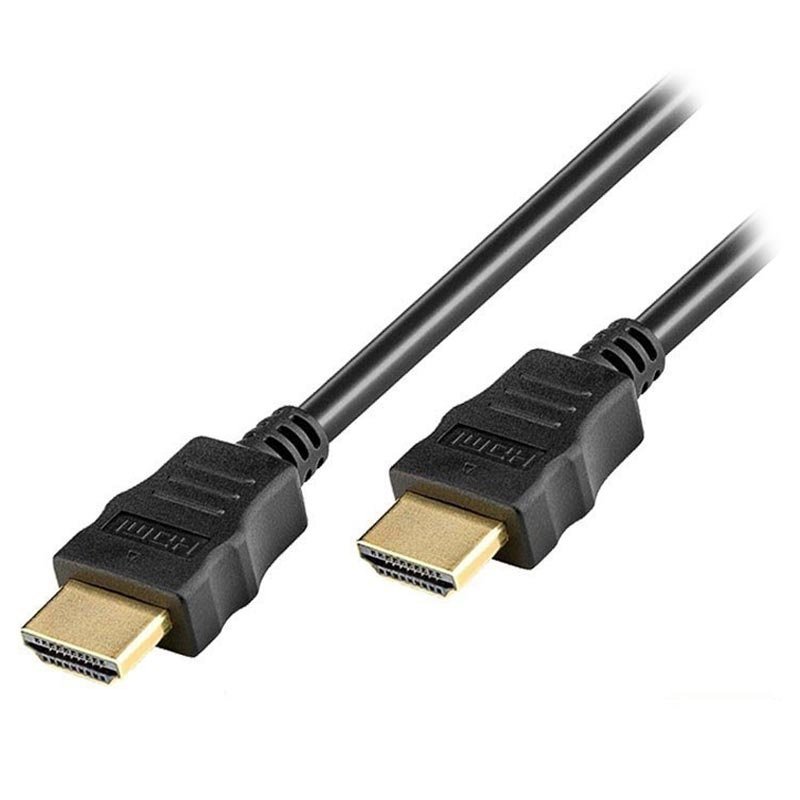
The year 2013: HDMI 2.0
- Also known as the HDMI Ultra-High Definition(UHD
- The maximum speed of 18Gbps with resolution refresh rates at a maximum of 4k at 60Hz.
- Supports 32 audio channels as well as an ultra-wide 21:9 cinema aspect ratio.
- Supports 8b/10b signal encoding and High Dynamic Range (HDR) video with static metadata.
The year 2017: HDMI 2.1
- Support for higher resolutions and higher refresh rates, including 4K at 120Hz and 8K at 120Hz.
- The maximum bandwidth of up to 48Gbps.
- Supports Dynamic HDR, Display Stream Compression (DSC) 1.2a, and enhanced Audio Return Channel (eARC).
- Fully backwards compatible.
Frequently Asked Questions About HDMI Cables
Here we answer some of the common questions asked and searched about HDMI cables.
What are the different formats of HDMI connectors? I do not have space to plug my HDMI cable directly, what should I do?
The standard HDMI cable has a male connector at either end of the cable. While in most situations this offers comfortable use, it may be hard to use where space is limited.
In situations wherein bending of the cable may occur, you can opt for a right-angled HDMI connector. These connectors are ideal when the devices are too close to walls or other unmovable objects, or when the normal cable may have to be sharply bent.
Alternatively, you can also find right-angled adaptors. However, they are not an ideal choice as they add further to the cabling and may not be as secure.
How many types of HDMI ports are there?
HDMI connection between two devices is done via the ports and the associated cables. As mentioned earlier there are 5 types of connectors; hence, there are 5 types of HDMI ports. However, the vast majority of devices can be seen with Standard, Mini, and Micro ports.
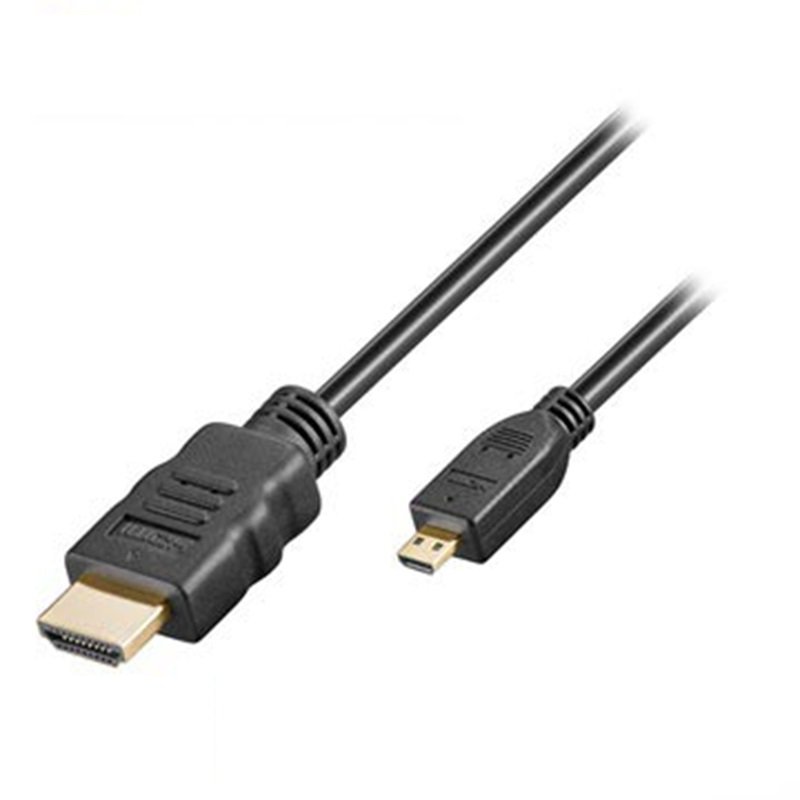
What is the HDMI alternate mode? How do you connect HDMI cables from phone to TV?
When you want to connect your mobile, laptop or even a tablet as the source to any HDMI-enabled device, you can opt for the HDMI Alt Mode. This USB Type-C to HDMI cable allows you to use the reversible USB-C connector with any native HDMI connectors.
This cable connection supports the full range features of HDMI 1.4b that include:
- Resolutions up to 4K
- Surround sound
- Audio Return Channel (ARC)
- 3D (4K and HD)
- HDMI Ethernet Channel (HEC)
- Consumer Electronics Control (CEC)
- High Bandwidth Digital Content Protection (HDCP 1.4 and HDCP 2.2)
Why are some HDMI connectors gold in colour? Are gold connectors better than the standard HDMI connectors?
While the most common colour for the connector is silver, you will find some brands opting for gold.
The gold coating is meant to prevent the oxidisation of the connector. However, the gold content is rather low and the coating is not necessary unless the cable is used in a damp and moist environment.
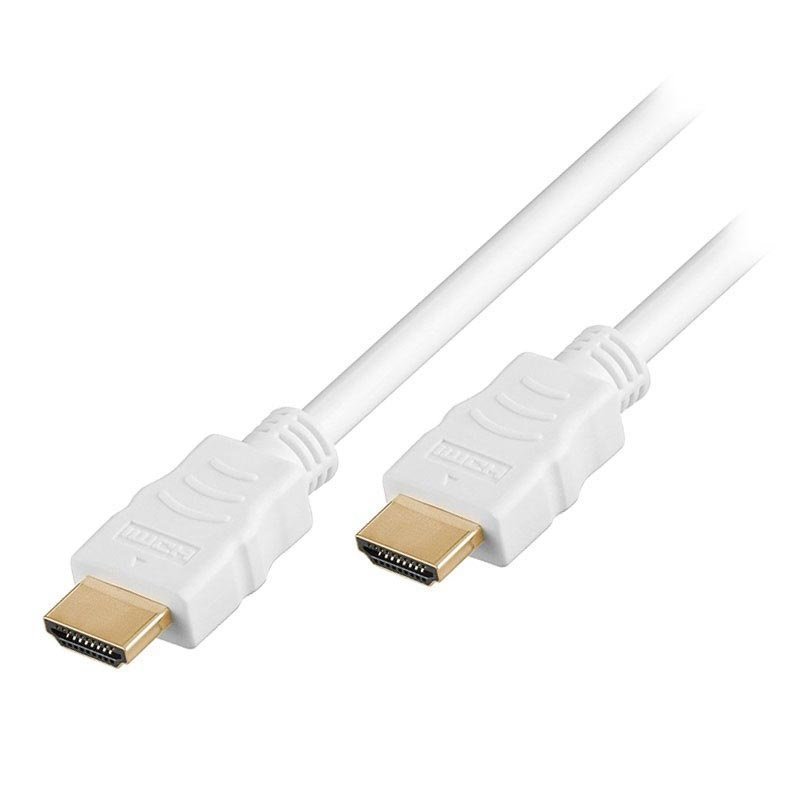
Can you combine HDMI with non-HDMI connections? How to connect different HDMI connectors
HDMI adaptors or cables can be used to create connections between HDMI connectors of different types and even other non-HDMI interfaces. These offer you the ability to enjoy consistent HDMI capabilities at both ends.
How can I connect multiple games consoles to my TV? How do I connect multiple devices to a single HDMI port?
HDMI switches can be used to connect multiple HDMI connectors to a single HDMI port. These gadgets have multiple input ports and a single output to a display. These can also be found with remote controls to switch between the different inputs.
Similarly, when you want to display on multiple screens from a single source device, you can use an HDMI splitter to do it. You can learn more in our blog post about connecting old gaming consoles with an HDMI cable.
How to clean HDMI connectors. Can dust affect the performance of HDMI cables?
Dust, dirt, or grime can introduce unwanted factors in your connections. These can make the cables not work as efficiently as they should. Follow these steps to get your cables and connectors clean:
- Disconnect the cable from any devices.
- If the pins seem bent, use a pair of tweezers to gently realign them.
- You can also use the tweezers to pick out dirt.
- Use a soft brush and a soft lint-free microfibre cloth to wipe the connectors.
- Use compressed air to blow out dirt from the connectors.
For stubborn dirt and grime, use isopropyl solution or appropriate cleaning products. Ensure your devices are completely turned OFF and not plugged into any power source. Soak an earbud in the solution and wipe the connectors. A toothpick can also be used to remove dirt from hard-to-reach places.
Wipe the connectors with a lint-free microfibre cloth and ensure all areas are completely dry before you use it.
What are wireless HDMI connectors? How to use a wireless HDMI connector
Wireless HDMI are great alternatives if you do not like the mess of cables. These are also ideal for set-up boxes, though not so much for gaming consoles since they introduce a bit of lag.
These connectors come in pairs; one connects to the source while the other to the output. These transmit via microwave frequency. Some wireless connectors come with built-in IR transmitters that will allow you to use TV remotes to control devices.
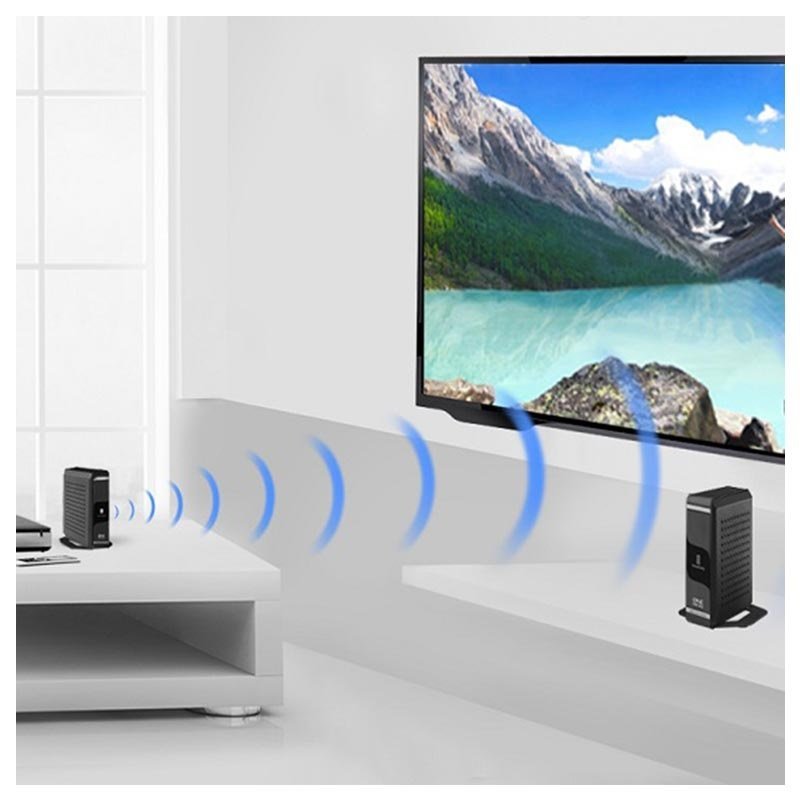
At the End of the HDMI Line: What should I look for when buying an HDMI cable?
Before we can conclude, here are a few things to remember before buying an HDMI cable.
- Ensure your HDMI cable has the right connectors to connect devices.
- Keep in mind the cable’s length when buying. Ensure the length is appropriate for use and does not make moving the components difficult.
- Look for the official certification logo to make sure you are getting what you pay for. Cheap cables are unlikely to provide the quality and durability of certified cables. On the other hand, an expensive price tag does not guarantee quality. Always buy from reliable sources.
- A 4k video projector or an Ultra HD Blu-ray player will benefit from a Premium-rated high-speed cable. Ensure your HDMI cables support the capabilities of your device.
Know More!
We hope our post has helped you learn more about HDMI and how to use it to enhance your audio-video experiences. If you are looking for more cables and adaptors or simply want answers to your questions about them, then get in touch with us!
At MyTrendyPhone, you will also be able to enhance your video and audio experiences with innovative and useful gadgets and devices. Let’s have a chat to find your next useful find.

